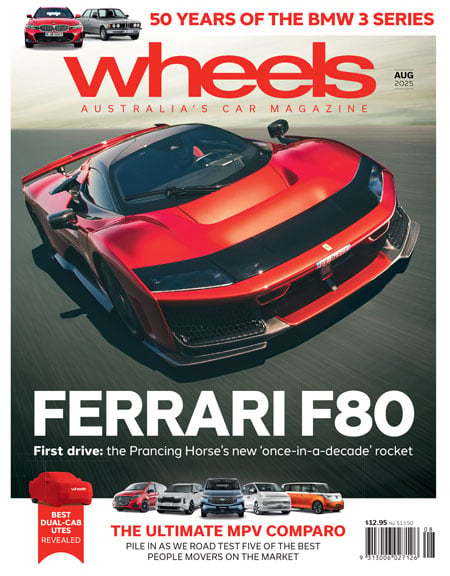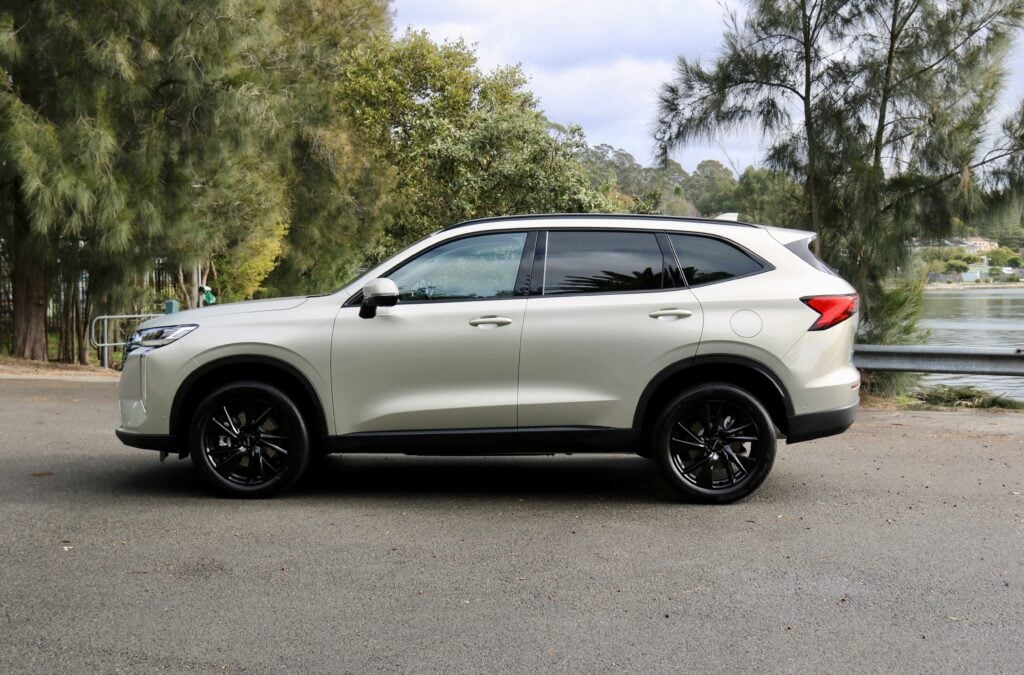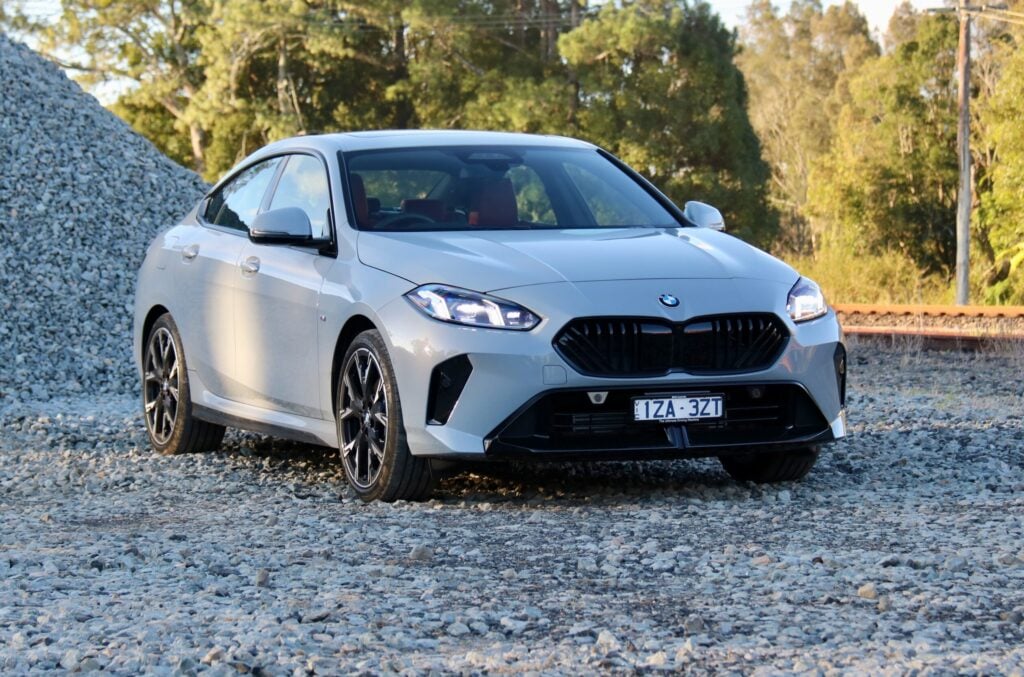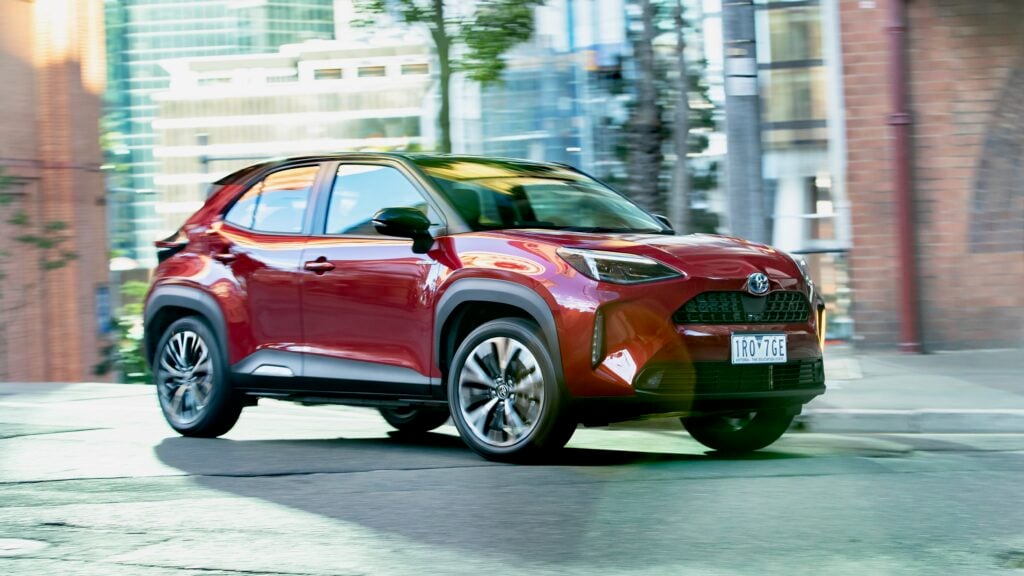
SUZUKI BALENO GL | 72/100
Price & Equipment | 18/20
Both cars offer maximum space for minimum bucks – they’re roomier than many small hatches and SUVs, for example – as well as a remarkably good level of kit in base spec. But the Suzuki trumps the Honda with a leather wheel, speed-limiter cruise control, auto headlights and LED DRLs. Colours other than white cost $500 extra.
Interior & Versatility | 15/20
Baleno is just 1mm shorter than Jazz, on a 10mm-shorter wheelbase. The Indian-built Suzuki is nicely presented but the materials and finish aren’t up to the Thai-built Honda’s. The 60/40 rear seat folds to take cargo capacity from 355 litres (more than a Mazda 3) to 1085, though a small aperture and high lip hamper its loading ease. 15/20
Performance & Economy | 17/20
A 1373cc petrol four with 68kW and 130Nm pulls the sub-tonne Suzuki via a five-speed manual and front-drive. It’s a willing worker, though performance doesn’t match the lively Honda’s, and neither has a soundtrack to excite. However, 5.1L/100km economy should ensure Baleno will go further from fill to fill despite its smaller 37-litre tank.
Ride & Refinement | 14/20
Identical-size hoops of just 175/65R15 come wrapped around plastic hub-capped steel wheels on both hatches. Baleno works with this respectable sidewall height and a relatively soft suspension set-up to deliver a bit more urban calm – and all-round quietness – but not the body control to remain comfortable in undulating country.
Steering & Handling | 12/20
Softer suspension makes the Baleno messier in the turns, while gluggy and inconsistent steering keeps the driver at arm’s length. Meanwhile, lower-quality rubber detracts from Baleno’s enthusiastically driven poise and grip to further undermine its overall capability. Rear drums the norm in this realm (though Jazz once had discs).
HONDA JAZZ VTI | 76/100
Price & Equipment | 17/20
Jazz matches Baleno with air-con, cruise, rear-view camera, 7.0-inch touchscreen, Bluetooth, six airbags and hill-start assist. But the Honda doesn’t have sat-nav (instead relying on a connected iPhone) and has an over-speed alarm in lieu of a speed limiter. Colours other than red cost about $500. Both come with space-saver spare wheels. 17/20
Interior & Versatility | 13/20
Jazz has a superior, lower driving position and steering reach adjustment. They’re both impressively roomy in the back, the taller Honda offering more headroom, though neither gets rear vents. Similar boot size, but with the various folding configurations of the Jazz’s ‘Magic Seats’, plus large door and tailgate openings, it offers greater load versatility.
Performance & Economy | 15/20
Larger 1497cc single-cam 16-valve four endows Jazz with an extra 20kW and 15Nm, so it has a healthier power-to-weight ratio despite carrying a few more kilos. But Jazz drains its 40-litre tank more quickly with consumption of 6.2L/100km. Base VTi the only Jazz to offer a five-speed manual, and it’s more fun than the CVT versions. 15/20
Ride & Refinement | 13/20
Featuring the same strut front and torsion-beam rear suspension layout, Jazz is a bit more firmly suspended, which makes the ride less forgiving around town, though it comes back with slightly better control during highway driving. Far from being great, though, the Honda succeeds by being average where the Suzuki is sub-par.
Steering & Handling | 13/20
There are more driver-oriented light hatches available, but in this company the Jazz is a cut above. A more consistently weighted power-steering calibration makes it a better tool for urban dicing, as well as more fun for a spirited run. The better-controlled chassis (at least when the road’s not too lumpy) makes it wieldier and more involving.
VERDICT
Jazz and Baleno rival some bigger cars for cabin and cargo space through smart packaging rather than by being bigger than their light classmates. But the Honda wins out because it’s taller, with a clever rear seat and easier loading access. Standard gear in the $14,990 Jazz and $15,990 Baleno is impressive – they were both available for $16,990 driveaway as five-speed manuals at the time of writing – but the Honda is nicer inside. The pair will undoubtedly be cheap to own, with reasonably low capped-price service schemes, though their three-year/100,000km warranties trail best-in-biz Hyundai and Kia, and six-month service intervals are less convenient than 12. They’re difficult to split in value terms, then, and neither is near the pointy end dynamically, but we’d go the Jazz.



